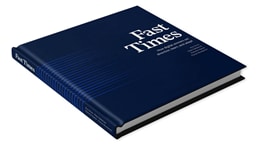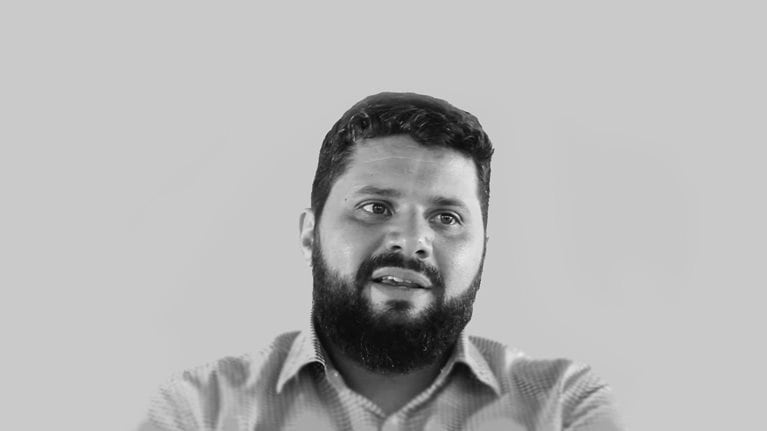As the Senior Vice President of Global Go-to-Market Strategy & Innovation at Procter & Gamble (P&G), F. D. Wilder led the charge to build a perpetual learning culture. Now retired, F.D. explains how he helped to enable a growth mind-set so the business could adjust to—and lead—constructive disruption.
Facing up to reality
To get a realistic view of where we stood, we adopted a “no mercy, no malice” approach. Translation: there’s no time for posturing; just tell it to me straight! This started about five years earlier, when e-commerce was 2 percent of the business, yet digital was impacting over 50 percent of our total sales. As one of my responsibilities, I—along with other key leaders and experts—was tasked to lead our e-business growth strategy and raise our digital IQ, recognizing digital transformation is a “team sport.” It was immediately apparent we could benefit from an outside point of view to benchmark performance versus our best competitors. That led us to Scott Galloway (professor at NYU Stern School of Business), who had developed an algorithm to calculate the digital IQ of a brand correlated to value creation.
We partnered with Scott’s start-up company, L2, to calculate the digital IQ scores of our brands and build our digital capabilities. When the program started to yield results, our CEO (A. G. Lafley at that time) asked us to present what we were doing and learning at our annual top management meeting. We started with a digital IQ test to assess base-level understanding. The test results helped illuminate the case for change and galvanize our business leaders to commit to meaningful digital transformation.
Building and supporting a learning culture
Because growth is shifting, and disruption is accelerating, we must be the fastest learners—and the fastest at applying learning—to deliver business outcomes. The goal is to democratize our knowledge and disseminate our learning, because if digital expertise is concentrated in too few people, that’s a risk for the enterprise. There is a quote from a P&G executive in our corporate archives that reads, “No institution has the luxury of rediscovering its own prior knowledge.” This is especially true today given the unprecedented pace and magnitude of change.
To share knowledge quickly, we launched a thought-leadership platform called Fastest Learner Wins. The content is created in a “snackable” format to address the biggest barrier to learning: time. Each video episode is short (five minutes or less), and people can watch it anywhere and anytime. About 80 percent of interviews for the series are external—people like Thomas Friedman, Chip Conley, David Rock, and General Stanley McChrystal—because it’s important to get outside voices into our company to gain new insights and perspectives on how we are doing. Digital transformation made it clear that a state of perpetual learning, or a growth mind-set, would be necessary for employees at all levels. The big idea is to shift our culture from knowing it all to learning it all.
The principle of self-directed applied learning has informed how we have constructed our training architecture. At one point, we started hiring external digital talent to accelerate our capability, but then we realized the biggest tech companies were heavily recruiting our people (around 800) for their commercial expertise. While it still made sense to selectively bring in external hires, we already had great talent and simply needed to invest more in training and development to raise their digital IQ.
As a first step, we created an enterprise-wide Digital Genius Academy (DGA) to upskill the organization. We found that every business unit already had some digital training in place, but there was a wide variation in quality. We started by pulling together the best elements of the training programs from across the company. Then we engineered the content in the DGA to focus on what we had learned over time about the critical few metrics that influenced the shopper path to purchase, such as winning search, quality content, website health, and superior online fundamentals.
The second program we launched to accelerate the pace of learning was an initiative called “eyes on consumer, hands on keyboard.” It included access to external coaches and digital practitioners. The problem we were trying to solve was: How do we enable a start-up growth mind-set inside of a large traditional company like P&G? This program addressed the issue by showing people how to take control of their accounts by putting hands on the keyboard to design their own direct-to-consumer website, build their own smart audiences using P&G’s proprietary data-management platform, post their own creative, and leverage analytics to optimize sales performance. We are teaching people the skills required to acquire new users, convert them to purchase, and retain them for lifetime value. In short, we are moving from traditional brand management to empowered “brand entrepreneurs.”
More recently, we introduced an Accelerated Learning Program (ALP). Think of this as an executive MBA and immersive learning experience. Twice a year, we bring high-potential managers from around the world to China to learn about the digital integration of offline and online commerce (“new retail”) and the application of data platforms to grow brand users and drive category growth. Nowhere in the world are consumer expectations changing more rapidly than in China. Online sales are nearly one-third of the total business, and China is P&G’s largest e-commerce market. The idea behind the ALP is to expose P&G leaders to what’s happening in China, with the expectation that they reapply their learning to accelerate growth.

Fast Times: How digital winners set direction, learn, and adapt
Finding a “third better way” to create value
A significant amount of sales growth across industries is coming from “digitally native brands” enabled by technology. The business challenge is how to respond to direct-to-consumer (DTC) brands in a way that builds value, grows the total category, and avoids channel conflict with existing retailers. Our business leaders were anxious to capture the momentum of DTC in several categories. A series of pilots showed us that the primary challenge was the consumer value proposition, not the tech stack. This led us to pivot to initiatives that focused on solving consumer pain points.
For example, we launched a DTC site called Gillette on Demand to deliver value and convenience via a highly differentiated consumer value proposition. We leveraged artificial intelligence on the Olay Skin Advisor mobile app to deliver personalized experiences and solutions, including data capture to build relationships with consumers. We acquired Native, a digitally native brand, to deliver authenticity and transparency that capitalizes on the naturals trend. This more diversified approach, leveraging the best elements from different business models, has helped us learn faster how to better meet consumer needs.
Now we are experimenting with “in-home commerce” via innovative partnerships. The in-home personal concierge model provides a direct pathway to the consumer—especially space-constrained urban dwellers—that integrates media, commerce, and research to generate brand trial. For example, we work with players in this space to leave a free sample of our brands in the home to see what people think. This new commerce channel gives us access to data and unique insights to better serve consumers. Fulfillment, including automatic replenishment, is handled via existing retailers, thus avoiding channel conflict.
Getting the word out to our own people
A world of shifting growth and accelerating disruption creates confusion and anxiety about the future among people. Our view is that we must lead mass disruption—turning confusion into clarity, and anxiety into agility. Scenario planning has helped provide a more balanced picture of plausible opportunities and outcomes. For example, in one growth scenario, consumers automate shopping of routine categories like toilet paper and laundry detergent to save time, which disproportionately advantages market-leading brands like Charmin and Tide. At P&G, we are focused on ways we can shape the future in a way that plays to our core strengths of innovation, brand building, and go-to-market.
In addition to facing reality and assessing the landscape externally via scenario planning, it’s important to tell our own stories to build confidence and inspire hope internally. In the absence of communication, people assumed we weren’t doing much and falling behind. None of that was true—we’ve made steady progress. To raise awareness, we started a campaign called “P&G is cooler than you think!” to highlight some of our own success stories at our annual innovation summit called “Signal.”
As an example, one of our scientists, Sara Giovanni, designed Pampers Pure diapers for herself as the target consumer while on maternity leave with twins! She wanted a diaper with naturally inspired ingredients and no trade-off on performance. Sara worked with a passionate team of fewer than ten people, applied lean innovation principles, and introduced Pampers Pure diapers in 18 months—for comparison, our normal process takes about three years. Sara told her story on a Fastest Learner Wins video, which received thousands of views, as her story demonstrated both what was needed and possible at P&G.
Leading disruption and delivering impact
Leadership is crucial to cultivate a culture of learning. A big lesson we’ve learned is the need to raise the digital IQ of leaders and equip them to lead mass disruption. When we started the training programs, our assumption was we needed to focus on middle managers, but the feedback soon made it clear that we had gaps among senior managers too. We realized the need to train senior managers differently than others in the organization. We had to shift from a knowing culture to a learning culture, from a “pass/fail” culture to a “learn/pivot” culture.
We also discovered the need to give senior leaders an opportunity to “deep dive” on relevant digital topics. To accomplish this, we paired them up with digital subject-matter experts in one-on-one sessions. The great thing about this “menternship” program—where leaders are both mentors and interns—is that the learning goes both ways. The digital experts provide the “know-how” and the senior leaders provide the “know-who” to help junior employees connect with the right people to get things done. Everyone wins.
Another important lesson we’ve learned is the need to coach leaders to ask the right questions depending on the business context. Questions like “How much capital is required?”; “What’s the ROI?”; “What will the market share be?” are the right operational questions when running a scaled business, but they are debilitating if you want people to try something new. Better questions in the innovation space are: “What is the consumer job to be done?”; “If we could solve the problem, is it big enough to move the needle?”; “What is the hypothesis you want to test?”; Do you have a minimal viable product?”; “Have you received any market validation?”; “What have you learned in last 30 days?”; “What do you want to learn in next 30 days?” These are the types of questions that empower people to test and learn.
Leadership and our commitment to learning has been essential in helping P&G become a digital leader. The interventions we’ve made to enable a self-directed applied learning culture are paying off. According to L2, P&G has the highest digital IQ score among all CPG companies, ranking number one or two across our categories. Digital has moved from a niche activity to a material driver of growth. Today, e-commerce represents $4.5 billion dollars in sales, about 7 percent of our total business, with an annual growth rate of more than 30 percent. These results reaffirm the power of a growth mind-set and the importance of leading constructive disruption. Our aspiration is to create a leadership culture that is constantly experimenting, bringing the outside in, and improving each day. In a world of shifting growth and accelerating disruption, the fastest learner wins.


